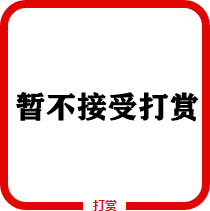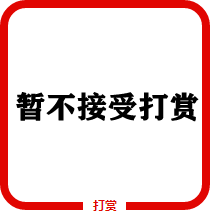冀教版七年级英语录音

冀教版初一英语课件
教学设计:
[教学目标]:
B:技能目标: 学会日常交际用语,谈论日期等,会询问或回答生日,年龄。
[教学方式]:
1.唱歌
2.任务型活动
4. 游戏
教学实录
[教学内容]
Unit 7 lesson51 When is your birthday?
[教具准备]
1. 录音机,挂历,卡片
2. 提前问清楚学生的生日,以及上课那天过生日的同学
[教学过程]
Step One : Greetings and warm up
( The teacher comes into the classroom with a calendar which is turning to December 5th )
1.T: Let’s sing the Good morning song. ( Sing the song together)
2.T: Revise the numbers from 1 to 31 by counting the students i n class. Ask the students to count the students together。
(通过唱歌的形式调动学生的学习参与积极性,并且让学生重温韵律为后面的生日歌曲奠定基础。复习1到31英文数字为后面的日期的读法做好准备。)
Step Two : Presentation
1. Show them the calendar, and ask “ What’s the date today?” and help the student answer “ It’s December 5th.” By looking at the calendar. Tell them the more dates with the calendar.
2. Ask a boy “ When is your birthday ?” and help him with Chinese . He can speak the date in Chinese .Then let him repeat in English.
3. Notice the dates , and write the question and the answer on the blackboard .
4. Teach the dates’ words and write them on the blackboard like : January 1st February 2nd March 3rd …..
And let them to repeat the words.
(先呈现日期让学生从感官上了解语言,并用日历呈现一年十二个月的英文单词,学生更加直观的接触语言,练习语言,并且运用语言做事情,提高了学生的兴趣,让学生更加积极主动的去探究语言。)
Step Three : Task 1 Pairwork
1. T: Today is Lin’s birthday. Let’s sing the song 《 Happy birthday to you 》
2. Make a converstion : A: When is your birthday?
B: It’s June 12th .
3. Let them work in pairs for 3 minutes and fill in the chart.
(学生在歌声中愉快的感悟本单元语言重点,并且增进了同学之间的感情。在学生已经形成系统的语言材料之后,让学生自己练习语言,并做好记录,同时训练了学生的听,说和写。让学生多维的去体验语言。)
Step Four : Act
1.Call several pairs to act out their conversations in class ,other students listen carefully and answer the question: When is her/ his birthday ?
2.Report . Using the results they got and give a report.
For example : Wang Fang’s birthday is on ……
3.Call some students to report in class and give them claps when they finish their work.
Step Five:Listening task
1. Listen to the tape and and answer some questions according to the text
2. Listen again and check the answers in class. Then repeat after the tape.
3. Work in pairs to act the dialogue :
A: When is Danny’s birthday?
B: It’s October 10th.
4. In class ,call some students to give a report about the three students who they talked about just now.
(在完成听力的基础上设计第三人称的问答,不仅更深的练习语言,而且为下一课时的.语言做好了铺垫。同时训练了学生的多维语言能力。)
Homework : 1. Ask four students for their birthday and then write
a report.
2 .Ask your parents’ birthday or the other family
Member’s birthday and write a report.
教学反思 :
我认为本节课有三个成功之处:
1.学生通过数数来复习1到31 的基数词,这一活动简单易行,让学生在实际操作中运用,体验所学的语言知识,并为学习日期的说法起到了很好的引导作用。体现了在用中学的思想。通过这样的活动,摆脱了机械的读,写,学生非常乐意去学习,有效的培养了学生的学习兴趣。
2.利用日历教学十二个月生词,形象直观,并通过歌曲来练习,学生在欢快的歌声中无形地掌握了十个月的单词的读音,书写及顺序,学的轻松愉快,而且记忆牢固。
3. 学生在初步掌握了 When is your birthday ? 句型之后,小组练习互相询问生日,不仅在任务中巩固语言并且增进了同学之间的情感,培养了学生团结,合作的品质和合作,探究的精神以及用所学语言解决实际问题的能力。此外,课外作业的布置也有效的巩固了所学语言知识,学生的知识得到了有益的延伸。
七年级冀教版英语课件1一、教学设计思路
Unit 1 是该教材的第一单元,又是为初学者准备的入门单元,总体内容不多,也不是很难,关键是做好一个衔接工作,根据学生的认知特点和心理特点,通过多样化的、趣味性的学习活动,让没基础的同学克服心里的畏难情绪,感觉到英语不难又很有趣;让有基础的同学更进一步培养起对英语学习的兴趣和自信。
教学重点:
Aa — Hh 的字母教学。
Hello! Good morning. Good afternoon. Good evening.
—How are you? —I'm fine, thanks. How are you? —I'm OK.
教学难点:课本中英语人名的学习和大、小写字母的学习及书写。整个单元的内容,可分配在五个课时中完成。
第一课时:完成 Section A 1a, 1b
第二课时;完成Section A 2a, 2b,2c, 2d, 3, 4a
第三课时:完成 Section A 4b, 4c, Section B 1, 2a, 2b
第四课时:完成 Section B 3a, 3b, 4, 5
第五课时:完成 Self Check and Just for Fun
二、教学目标
A. 语言知识目标
1.词汇: Letters Aa — Hh
八个人名 Alice, Bob, Cindy, Dale, Eric, Frank, Grace, Helen
2.句型:Good morning. Good afternoon. Good evening.
—How are you? —I'm fine, thanks. How are you? —I'm OK.
B. 情感目标
1. 激发学生学习英语的兴趣,发挥学生学习英语的积极性和主动性。
2.通过小组活动,培养学生的合作意识和团队精神。
三、教学策略
1.以趣激学:采用做游戏和猜谜等学生所喜闻乐见的学习形式激发学生的参与热情。
2.以放促学:开放地处理教材,插入大量有趣的图片、增加多种趣味活动,充分利用学生自主搜集的图文信息,拓宽学生的视野,实现知识的整合。
3.以任务导学:以话题为纲,以任务为主线,以合作交际为方式,培养学生用英语交流信息,获取信息和处理信息的能力。
四、学习策略
1.交际策略:学会与他人合作交流,并能把语言材料用到真实的生活中去。
2.资源策略:学会利用多种学习资源来获取更多的学习信息。
3.认知策略:主动思考(观察力、注意力、想象力、逻辑推理能力等),大胆实践,及时反馈。
4.调控策略:通过课堂反馈和 self-check,明确自己的学习状况,不断调整自己的学习策略。
七年级冀教版英语课件2Lesson 1
1. May I go on a trip to Beijing?我可以去北京旅行吗?
1) 句中may是情态动词。表示允许或征询对方的许可,其否定形式可以是may not ,也可以是must not /mustn’t;但表示禁止时常用must not/mustn’t。例如:
May I help you?要我帮忙吗?
May I come in,please ?请问, 我可以进来吗?
---May I go to the cinema?我可以去看电影吗?
---Yes,you may。/Not,you mustn’t. 是的,你可以去。/不,你不可以去。
注意:表示客气请求或征询意见时,也可用Can I/Could I /Could you…?句型来表达。例如:
Can I help you?要我帮忙吗?
Could you help me,please? 你能帮我一下吗?
2)句中trip是名词,意为“旅行”。a trip to Shanghai 上海之行,go on a trip to …到… 的旅行。例如:
May we go on a trip to Canada?我们可以去加拿大旅行吗?
My father will go on a trip to Wuhan. 我爸爸要去武汉旅行。
I wish you a good trip. 祝你旅行愉快。
2.But it’s the capital city of our country. 但是它是我国的首都。
1)句中but 是连词,意为“但是”。它是个表示转折意义的并列连词。例如:
I like apples but my mother doesn’t. 我爱吃苹果,但我妈妈不爱吃。
The box is large but light. 这个盒子大,但很轻。
Playing basketball is difficult but interesting. 打篮球很难,但很有趣。
2)句中city是名词,意思是“城市”。“the city of+表示地点的名词”相当于“表示地点的名词+city”。例如:
Beijing city=the city of Beijing 北京市
Tianjin city=the city of Tianjin 天津市
3. 1)You’re too young to go.你太小还不能去。
句中too是副词,意思是“太”。too…to…表示否定的含义,意为“太…而不能…”,其中too之后接形容词或副词,to 之后接动词原形,构成不定式短语。例如:
It’s too hot today. 今天太热了。
This shirt is too small for me. 这件衬衫我穿太小了。
The boy is too young to go to school. 这个男孩太小还不能去上学。
Ann speaks too fast to understand. 安讲得太快,(别人)听不懂。
2)You can go,too. 你也去。
着句话中的too也是副词,意思是“也”。用于肯定句,置于句尾。例如:
I’m fine,too. 我也很好。
You can go on a trip to Beijing,too. 你也可以去北京旅行。
4. But Beijing is far from our city. 但是北京离我们市太远了。
句中far from 意为“离…远“。例如:
The school is far from here.学校离这儿很远。
5. It’s only two hundred seventy-eight kilometers from Shijiazhuang to Beijing.从石家庄到北京只有二百七十八公里。
1) 句中only 是副词,意为“仅;只”。only 在句中的位置不同,它所修饰的成分就不同,句意也就不同。例如:
Only I go to school with Tom on Monday. 星期一,只有我和汤姆一起去上学。(没有别人和汤姆一起)
I only go to school with Tom on Monday. 星期一,我只是和汤姆一起去上学。(“我们”没有一起做其他的事)
I go to school with Tom only on Monday. 我只有星期一和汤姆一起去上学。(其他时候“我”不和汤姆一起去上学)
2)句中from…to…意为“从…到…”, 既可以加表示时间概念的词,又可以加表示空间概念的词。例如:
from ten to eleven 从十点到十一点
This letter is from Jenny to her teacher.这封信是詹妮寄给她的老师的。
It’s very far from Shijiazhuang to Shenzhen. 从石家庄到深圳很远。
6.go shopping 去购物。同意短语:do some/the shopping 或buy sth in a shop。例如:
go shopping everyday 每天去店铺买东西。
I often go shopping on Sunday. 我经常在周日去购物。
拓展:go+v.-ing 意为“去做某事”例如;go swimming 去游泳,go skating 去滑冰,go boating 去划船,go fishing 去钓鱼。
7. You are a good boy,and you work hard in school.你是个好孩子,并且你在学校学习很用功。
句中hard 是副词,意为“努力地”。另外hard 也可以作形容词意为“硬的, 坚固的”、“困难的,费力的”、“辛苦的,艰难的”。例如:
work hard 努力工作
hard work 很累人的工作
The ice is not hard enough to skate on. 这块冰不够结实,不能在上面划。
These questions are too hard. 这些问题太难了。
Thank you for your hard work. 感谢诸位的辛苦工作。
8. Great!太好了!great 是形容词(用于口语)好极了;非常愉快的。表示赞同、赞扬或兴奋的感情。例如:
That’s great!太好了!
great 还有“巨大的;伟大的”之意。例如:a great man 伟人;the Great Wall 长城
9. May I eat in restaurant? 我可以在饭店吃饭吗?
eat 是动词“吃”。可作及物动词,表示具体吃某东西。例如:
eat bread 吃面包
They eat much chicken. 他们吃很多鸡肉。



